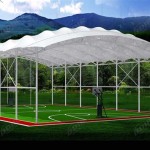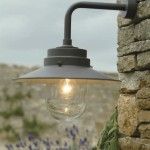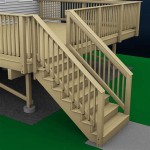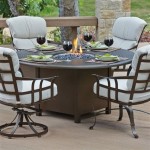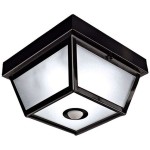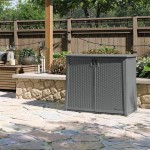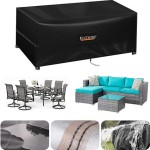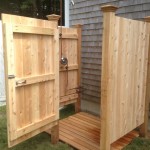```html
Large Decorative Planters For Outdoors
Large decorative planters serve as substantial focal points in outdoor spaces, contributing significantly to the aesthetic appeal and overall design of gardens, patios, and entryways. They offer a functional and stylish way to showcase plants, define areas, and elevate the visual interest of the landscape. The selection of appropriate large planters involves considering various factors, including material, style, size, drainage, and the specific needs of the intended plants.
The scale of large planters allows for the cultivation of a wider range of plant species compared to smaller containers. This includes small trees, shrubs, and a diverse array of flowering plants and greenery. The increased soil volume provides ample room for root development, promoting healthier and more robust plant growth. Furthermore, large planters can be strategically positioned to create visual barriers, enhance privacy, or direct foot traffic within an outdoor area.
Material Considerations for Large Outdoor Planters
The material from which a large planter is constructed significantly impacts its durability, weight, appearance, and suitability for specific environments. Common materials include terracotta, concrete, fiberglass, wood, metal, and plastic. Each material offers distinct advantages and disadvantages that should be carefully evaluated before making a purchase.
Terracotta planters are known for their classic, earthy aesthetic and porous nature, which allows for good aeration and drainage. However, terracotta is susceptible to cracking in freezing temperatures and can be quite heavy, especially when filled with soil. They are often a good choice for Mediterranean or rustic-themed gardens, but require careful winterization in colder climates.
Concrete planters are incredibly durable and resistant to the elements, making them ideal for long-term outdoor use. They offer a contemporary, industrial look and are available in various shapes and sizes. The significant weight of concrete planters provides stability, preventing them from being easily toppled by wind or accidental bumps. However, this weight also makes them difficult to move once they are filled with soil.
Fiberglass planters are a lightweight and versatile option that mimics the appearance of more expensive materials like stone or metal. They are resistant to cracking, fading, and moisture damage, making them suitable for a wide range of climates. Fiberglass planters are available in a vast array of colors, shapes, and textures, providing ample design flexibility. Their relatively light weight makes them easier to move and reposition compared to concrete or terracotta.
Wooden planters offer a natural and warm aesthetic that complements various garden styles. They can be constructed from different types of wood, such as cedar, redwood, or pressure-treated lumber, each offering varying degrees of weather resistance. Wooden planters require regular maintenance, including staining or sealing, to prevent rot and decay. Liners are often recommended to protect the wood from direct contact with soil moisture.
Metal planters, such as those made from galvanized steel, aluminum, or cast iron, offer a modern and durable option. They are resistant to rust, corrosion, and impact damage, making them suitable for harsh outdoor conditions. Metal planters can be powder-coated in various colors to match the surrounding décor. However, metal can heat up quickly in direct sunlight, potentially affecting plant roots, so proper placement or insulation may be necessary.
Plastic planters are a budget-friendly and lightweight option that is available in a wide range of colors and styles. They are resistant to cracking, fading, and moisture damage, making them suitable for various climates. However, plastic planters may not be as durable as other materials and can become brittle over time, especially when exposed to prolonged sunlight. They may also lack the aesthetic appeal of other materials.
Style and Design Considerations
The style and design of large outdoor planters should complement the overall aesthetic of the outdoor space. Planters are available in a wide range of styles, from traditional and ornate to modern and minimalist. Choosing the right style can significantly enhance the visual appeal of the landscape.
Traditional planters often feature intricate details, such as fluted sides, scrolled edges, and decorative moldings. They are typically made from terracotta, concrete, or cast iron and are well-suited for formal gardens or classic architectural styles. Ornate planters can add a touch of elegance and sophistication to an outdoor space.
Modern planters typically feature clean lines, simple shapes, and a minimalist design. They are often made from concrete, fiberglass, or metal and are well-suited for contemporary gardens or urban environments. Modern planters offer a sleek and understated aesthetic that complements minimalist architectural styles.
Rustic planters often feature a natural and weathered appearance. They are typically made from wood, terracotta, or stone and are well-suited for cottage gardens or informal landscapes. Rustic planters can add a touch of charm and character to an outdoor space.
In addition to style, the color and texture of the planter can also significantly impact its aesthetic appeal. Neutral colors, such as gray, beige, or white, tend to blend seamlessly with the surrounding landscape, while bolder colors, such as red, blue, or yellow, can create a striking focal point. Textured planters can add visual interest and dimension to an outdoor space.
The shape of the planter should also be considered. Round planters offer a softer, more organic look, while square or rectangular planters offer a more structured and formal appearance. Taller planters can add vertical interest to the landscape, while wider planters can create a sense of stability and grounding.
Drainage and Plant Selection
Proper drainage is essential for the health of plants grown in large outdoor planters. Without adequate drainage, the soil can become waterlogged, leading to root rot and other plant diseases. Most large planters come with pre-drilled drainage holes, but it is important to ensure that these holes are not blocked by soil or debris.
Adding a layer of drainage material, such as gravel or broken pottery, to the bottom of the planter can further improve drainage. This layer helps to create a space for excess water to collect, preventing the soil from becoming saturated. It is also important to use a well-draining potting mix that is specifically formulated for container gardening.
The selection of appropriate plants for large outdoor planters is crucial for creating a visually appealing and thriving display. Consider the plant's mature size, sunlight requirements, and watering needs when making your selection. Choose plants that complement each other in terms of color, texture, and form.
For sunny locations, consider planting drought-tolerant species such as succulents, cacti, or Mediterranean herbs. These plants thrive in hot, dry conditions and require minimal watering. For shady locations, consider planting shade-loving species such as ferns, hostas, or impatiens. These plants prefer moist soil and indirect sunlight.
When planting multiple plants in a single planter, consider the "thriller, filler, and spiller" design principle. The "thriller" is the focal point of the arrangement, typically a tall or eye-catching plant. The "filler" plants add volume and texture to the arrangement, filling in the gaps around the thriller. The "spiller" plants cascade over the edges of the planter, adding a touch of drama and movement.
Regular watering and fertilization are essential for maintaining the health of plants grown in large outdoor planters. Water thoroughly when the top inch of soil feels dry to the touch. Fertilize regularly with a balanced fertilizer, following the instructions on the product label. Prune plants regularly to remove dead or damaged foliage and to encourage new growth.
Large decorative planters for outdoors offer a versatile and stylish way to enhance the beauty of any outdoor space. By carefully considering the material, style, drainage, and plant selection, one can create a stunning and thriving display that will be enjoyed for years to come.
```
Escada Tall Ceramic Planters Verdigris Kinsey Garden Decor

Lightweight Outdoor Decorative Plastic Flower Pots Planters Multi Sizes For Succulent Plant Garden And Shopping Mall Use

Perfect Pairings Plant Combinations For Large Outdoor Pots

Large Decorative Pots For Outdoor Plants Planters Glastres Greens Planter Suppliers Manufacturers Wholesalers Exporters Dealers Retailers Plant Buy Flowers Pot Upto

Plantara 22 In H Natural Tall Concrete Planter Modern Decorative Pot With Drainage Hole Round Planters For Outdoor Pa0066a 8021 The Home

Curbside Bell Tower Plastic Outdoor Planter Pot Newpro

Paraiso Ceramic Planters Verdigris Green Kinsey Garden Decor

Factory Direct Large Tall Square Planter Pot Minimalist Style Flower Pots For Outdoor Plants Stone Like Plastic Plant Hand Carved Decorative Planters And Vases Price Made In Com

Reviews For Vigoro 17 In Jennings Large Gray Plastic Fiberglass Tall Decorative Planter D X 19 H With Drainage Hole Pg 2 The Home

Rotational Indoor Outdoor Planter For Home And Gardens Harshdeep
See Also

